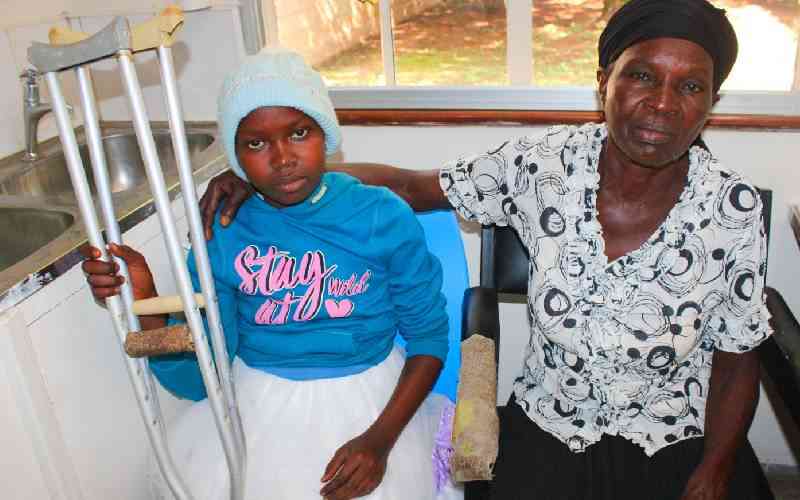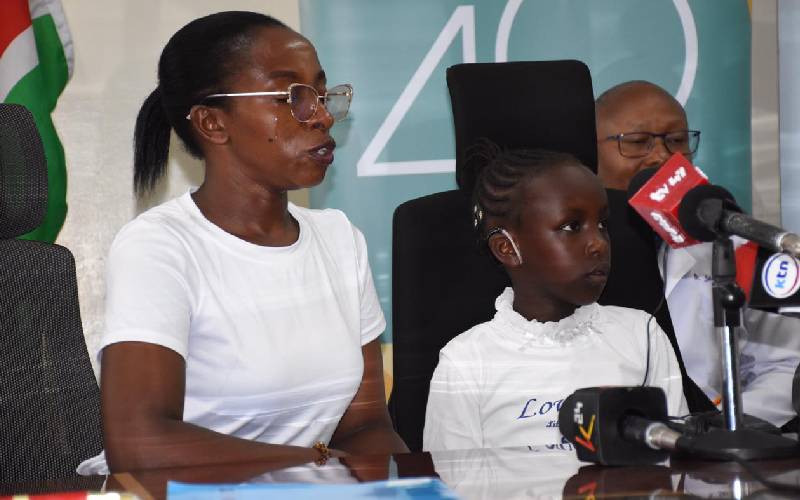
Given recent warm temperatures, cholera outbreaks could become more frequent, scientists have warned. And as Kenya faces a cholera outbreak in about a dozen counties countrywide, moderate increase in sea temperatures and levels associated with global warming naturally suggest possibility of increased public health concerns like cholera and Hepatitis A.
Kenya Medical Research Institute (Kemri) Chief Research Officer Andrew Githeko is leading a team of scientists to research on the effect of climate on bacteria that causes cholera that thrives in temperatures ranging from 25 to 30 degrees centigrade. “When the weather gets warmer, it creates a conducive environment for bacteria and viruses to multiply in food and water, causing disease,” said Dr Githeko, Kemri Head of Climate and Human Health Research Unit at Centre for Global Health Research.
He linked higher temperatures due to climate change to increase in water-linked diseases like cholera, malaria and dengue. “Unusually warm weather in February and March if followed by heavy rains in April and May leads to malaria and cholera outbreaks, as was seen in 1997 and 1998,” he said.
As these micro-organisms thrive, he said, poor hygiene and sanitation, which include lack of proper disposal of solid and liquid waste from humans and households and poor hand-washing habits expose populations to these food and water-borne diseases. High water tables also cause latrines to flood, prompting disease.
Dr Githeko found out that most cholera outbreaks occur after increased rainfall and warm temperatures, thus arriving at the conclusion that climate plays a key role in modulating the size of outbreaks and as it gets hotter, water-borne diseases like cholera and vector-borne diseases like malaria flourish.
The scientist gave an example of a two-fold increase in cholera cases in Zanzibar between 1997 and 2006 after a one degree centigrade increase in temperature at four months’ interval, and an increase of 200mm in rainfall at two months’ period resulted in a 1.6-fold increase in cholera cases.
He identified some diseases like diarrhoea, cholera, Hepatitis A and E, that are sensitive to climate change and variability, further warning that compromised water and food-handling habits especially during these soaring temperatures is fertile ground for more outbreaks.
“Due to the warm weather, individuals are also consuming more water, unaware whether it is properly treated. Food handling is also compromised, thus it is a fertile ground to transmit water and food borne diseases,” he added in an interview with The Standard on Saturday.
According to Dr Githeko, climate change is a regional other than local event. He cites the 1997/98 cholera epidemic that affected populations living around the shores of Lake Victoria, leading to the ban of fish from the region to European markets. And as climatologists predict a 1.4 to 5.8 degree centigrade rise in mean temperatures over the next 100 years, Dr Githeko advises that with expertise on predictive weather patterns, being forewarned will shield Kenya from adverse effects of public health outbreaks.
While cholera has not been heard in most developed countries in the last five decades, Kenya is currently dealing with recent outbreaks, with about 17 counties having successfully contained the public health concern. Another 12 are fighting further spread.
And just what is the relationship between Hepatitis A and cholera? Both diseases are caused by compromised food and water hygiene standards. Hepatitis A virus is transmitted through ingestion of contaminated food and water or through direct contact with an infectious person, whereas cholera is caused by Vibrio cholerae, a bacteria that normally lives in water.
In May last year, disease surveillance officers in Nakuru found a majority of persons from cholera-affected households who had died and others being treated had consumed Busaa prepared in unhygienic conditions.
Cholera can be simply and successfully treated by immediate replacement of the fluid and salts lost and appropriate use of antibiotics for severe cases. Some of the common symptoms that indicate cholera include vomiting and diarrhoea, with large volumes of watery stools, severe de-hydration manifested by low pulse, undetectable blood pressure, sunken eyes, wrinkled hands and feet.
The World Health Organisation has a pre-qualified cholera vaccine proven to be safe and effective, and available for individuals aged two years and above for populations in risk areas, whereas for Hepatitis A, a vaccine is also available besides other preventive measures like having good sanitation systems, safe preparation of food and access to clean tap water.
Water treatment expert Elvis Khamala said it is important to treat water before consumption.
“Chlorine is widely used for disinfection and various types of filters are also used for silt or sediment removal. More advanced membrane technologies are used for removal of chemical contaminants,” said Mr Khamala, a water treatment engineer at Davis & Shirtliff.
Dr Githeko concludes that, “The weather may become more unpredictable and there will be need to anticipate climate risks as required by the precautionary principle with biologists, other health scientists as well as meteorologists working together on data and knowledge sharing in developing predictive tools.”
 The Standard Group Plc is a multi-media organization with investments in media
platforms spanning newspaper print
operations, television, radio broadcasting, digital and online services. The
Standard Group is recognized as a
leading multi-media house in Kenya with a key influence in matters of national
and international interest.
The Standard Group Plc is a multi-media organization with investments in media
platforms spanning newspaper print
operations, television, radio broadcasting, digital and online services. The
Standard Group is recognized as a
leading multi-media house in Kenya with a key influence in matters of national
and international interest.











